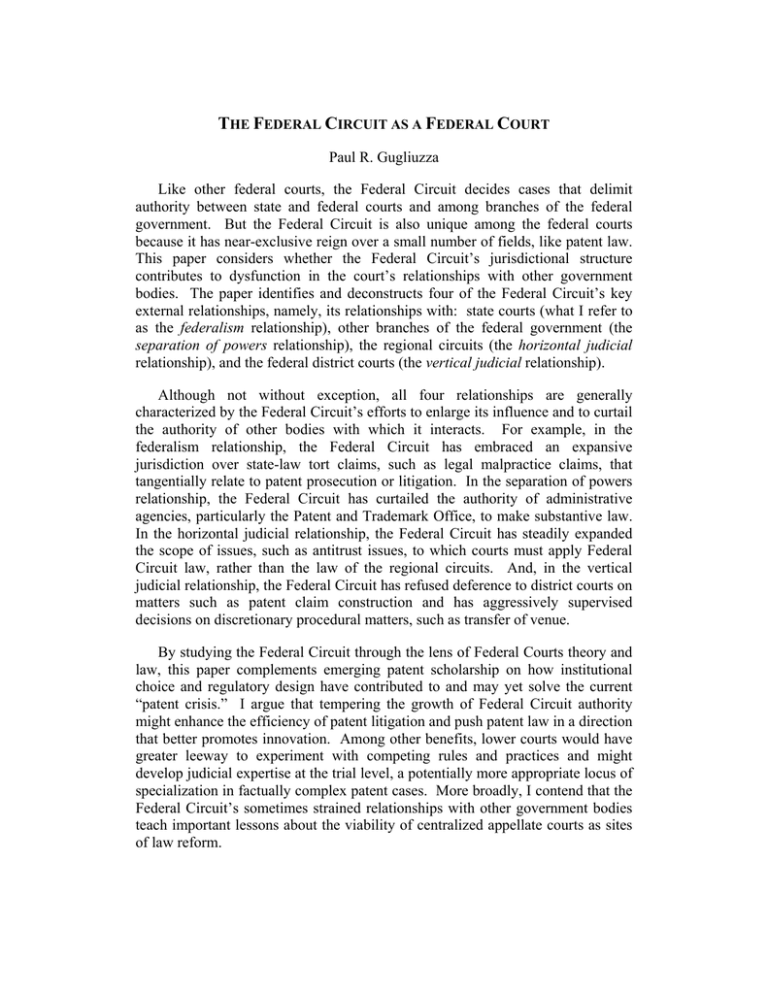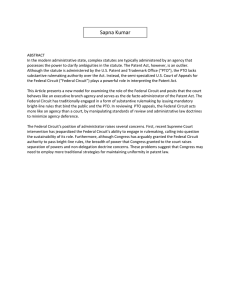T F C
advertisement

THE FEDERAL CIRCUIT AS A FEDERAL COURT Paul R. Gugliuzza Like other federal courts, the Federal Circuit decides cases that delimit authority between state and federal courts and among branches of the federal government. But the Federal Circuit is also unique among the federal courts because it has near-exclusive reign over a small number of fields, like patent law. This paper considers whether the Federal Circuit’s jurisdictional structure contributes to dysfunction in the court’s relationships with other government bodies. The paper identifies and deconstructs four of the Federal Circuit’s key external relationships, namely, its relationships with: state courts (what I refer to as the federalism relationship), other branches of the federal government (the separation of powers relationship), the regional circuits (the horizontal judicial relationship), and the federal district courts (the vertical judicial relationship). Although not without exception, all four relationships are generally characterized by the Federal Circuit’s efforts to enlarge its influence and to curtail the authority of other bodies with which it interacts. For example, in the federalism relationship, the Federal Circuit has embraced an expansive jurisdiction over state-law tort claims, such as legal malpractice claims, that tangentially relate to patent prosecution or litigation. In the separation of powers relationship, the Federal Circuit has curtailed the authority of administrative agencies, particularly the Patent and Trademark Office, to make substantive law. In the horizontal judicial relationship, the Federal Circuit has steadily expanded the scope of issues, such as antitrust issues, to which courts must apply Federal Circuit law, rather than the law of the regional circuits. And, in the vertical judicial relationship, the Federal Circuit has refused deference to district courts on matters such as patent claim construction and has aggressively supervised decisions on discretionary procedural matters, such as transfer of venue. By studying the Federal Circuit through the lens of Federal Courts theory and law, this paper complements emerging patent scholarship on how institutional choice and regulatory design have contributed to and may yet solve the current “patent crisis.” I argue that tempering the growth of Federal Circuit authority might enhance the efficiency of patent litigation and push patent law in a direction that better promotes innovation. Among other benefits, lower courts would have greater leeway to experiment with competing rules and practices and might develop judicial expertise at the trial level, a potentially more appropriate locus of specialization in factually complex patent cases. More broadly, I contend that the Federal Circuit’s sometimes strained relationships with other government bodies teach important lessons about the viability of centralized appellate courts as sites of law reform.






